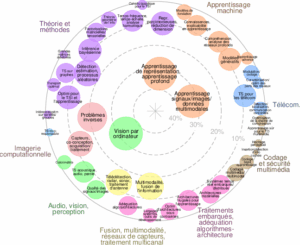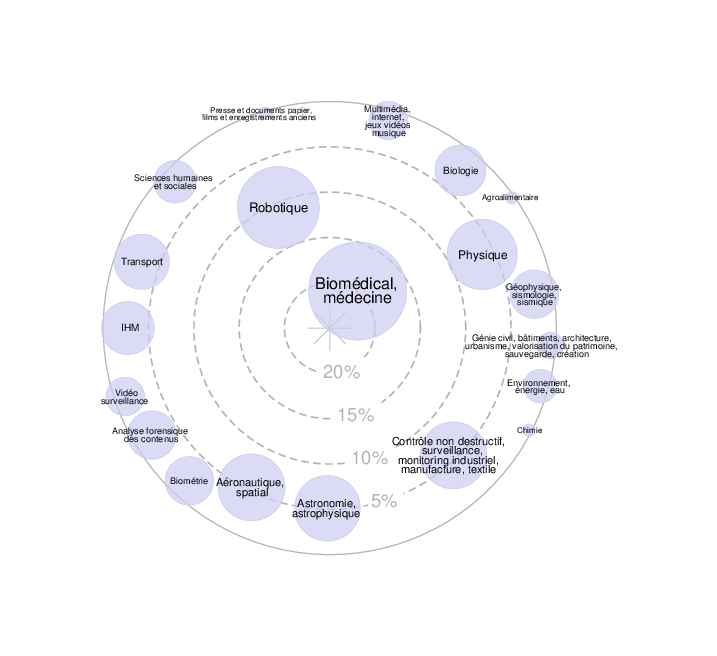Postdotoral position
This project relies on a collaboration between two partners: CEA/DRF/IRAMIS/LLB and CEA/DES/LIAD. These labs have joined their expertise to work on a novel approach to determine the interaction parameters of a given Hamiltonian, by leveraging innovative AI methodologies to analyze neutron scattering spectroscopy data.
LLB is a joined CEA-CNRS lab, renowned for its expertise in neutron spectroscopy. It contributes to the development of neutron instruments for the ESS, the next generation european source to be constructed in Lund (Sweden), but also at the Paul-Scherrer Institut (PSI) in Switzerland, and at the High Flux Research Reactor of the Institut Laue-Langevin (ILL) in Grenoble. Notably, the ILL is the current european neutron source, worldwide recognized for its very intense neutron flux and world-class scientific infrastructure. The LLB has also developed advanced numerical tools for calculating the dispersion of collective excitations in condensed matter along with their neutron cross-sections.
LIAD focuses on AI research and uncertainty quantification, emphasizing causality, causal discretization methods, and the analysis of special data types like time series. Its is developing machine learning techniques to quantify uncertainties, particularly in neutronics. Causality is a burgeoning field, integrated to LIAD’s research, aiming to create novel approaches for causal discretization and handling heterogeneous data. Over the past two decades, causality has been increasingly integrated into machine learning to enhance model interpretability beyond simple correlations.
Project Summary: Neutron spectroscopy experiments are pivotal in determining the spectrum of collective excitations in condensed matter, which in turn allows deducing the parameters of the interaction Hamiltonian responsible for the material physical properties. These collective excitations, often represented as waves (or particles) propagating through a crystal lattice, are characterized by their energy (E) and wave vector (q). Neutron scattering techniques enable direct imaging of the dispersion relation E = f(q), encapsulating the essential physics. Traditionally, these data are fitted through trial-and-error methods using numerical simulations. Our project aims to overcome this approach by developing an innovative AI-based method to determine Hamiltonian parameters and establish causal links between these parameters and dispersion curves. Unlike correlation, which is commonly used in machine and deep learning to measure the relationship between variables, causality aims at identifying whether one variable directly influences another. Correlation shows association but does not imply causation, meaning it does not reveal why variables move together. Hence, causality is essential to ensure that an intervention of identified parameters provides significant modifications on the dispersion curves.
Research Focus: Causality is a burgeoning field that integrates seamlessly with uncertainty quantification, forming a core part of LIAD ongoing research. This project will involve:
- Developing causal discovery and inference methods for effective discretization and handling heterogeneous data.
- Integrating causal models into machine learning to provide explicable predictive models, moving beyond mere correlations.
- Employing Directed acyclic graphs (DAGs) to represent causal relationships among variables.
- Innovating methods where the nodes of the causal graph are interpretable subsets of variables, enhancing the causal discretization’s relevance and quantifying the associated uncertainty.
Objectives: The primary objective is to create a powerful AI-based tool for analyzing neutron scattering data. This tool will:
- Efficiently determine Hamiltonian interaction parameters.
- Establish and quantify causal relationships between these parameters and the observed dispersion relations.
- Enhance the explanatory power and predictive accuracy of the models used in neutron spectroscopy.
Qualifications:
- Experience with AI, machine learning, and causal inference methodologies.
- Ability to work independently and collaboratively within a multidisciplinary team.
Application Process: Duration: 12 months, renewable for 12 months. Interested candidates should submit the following documents:
- A cover letter detailing their research interests and relevant experience.
- A current curriculum vitae (CV).
- Reference letter(s)
Contacts:
Applications are only accepted through email. All documents must be sent to Aurore Lomet (aurore.lomet@cea.fr), Victor Balédent (victor.baledent@universite-paris-saclay.fr) and Sylvain Petit (sylvain.petit@cea.fr)





